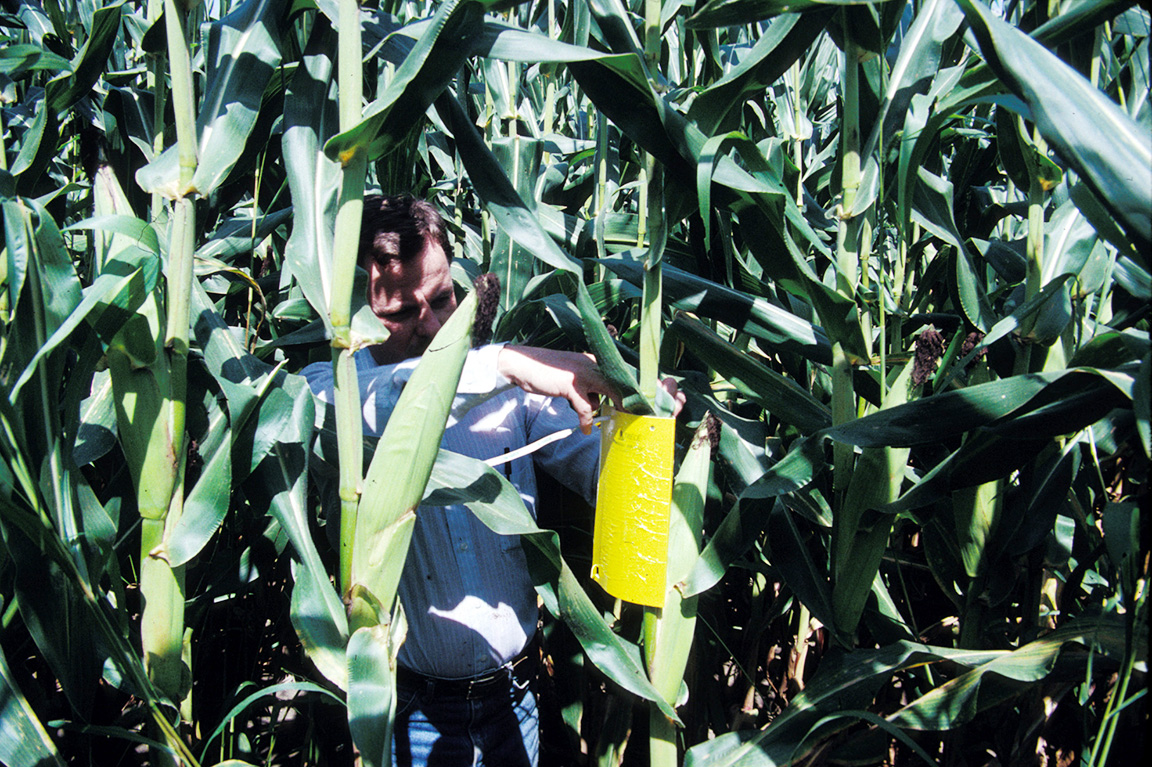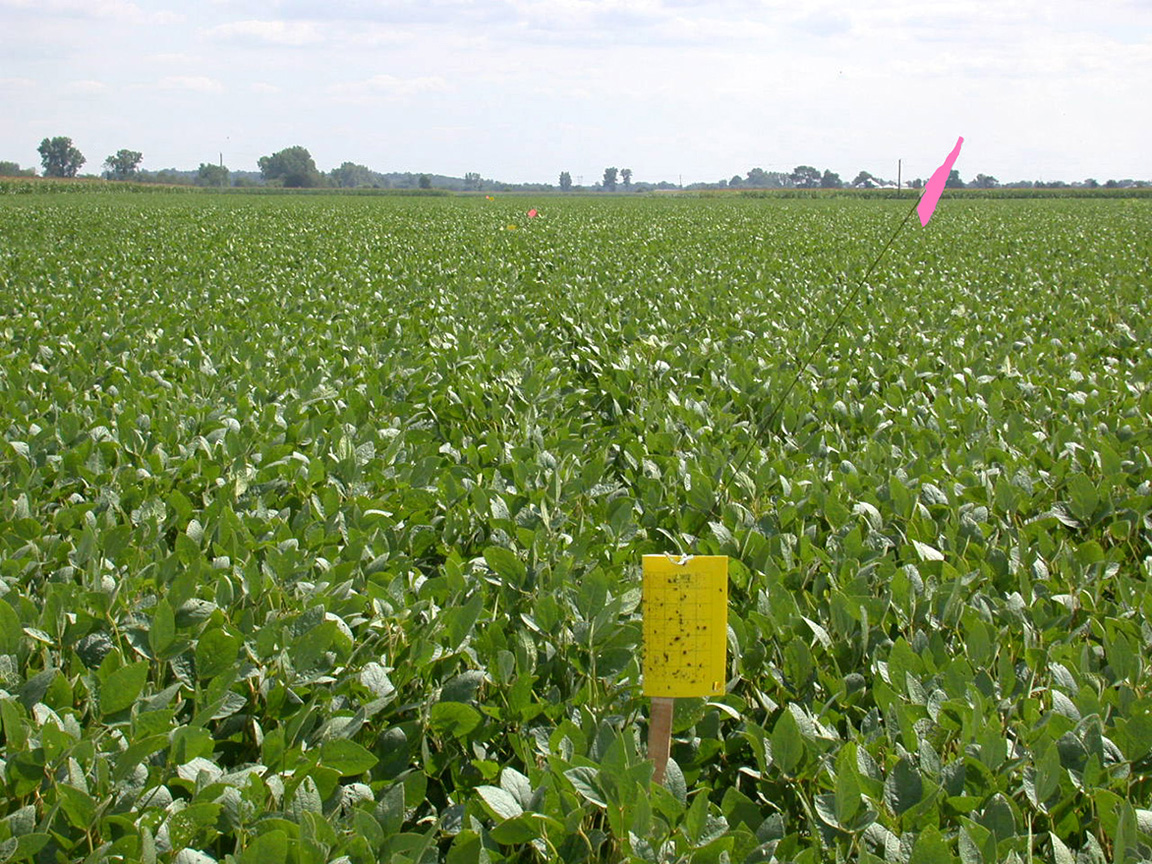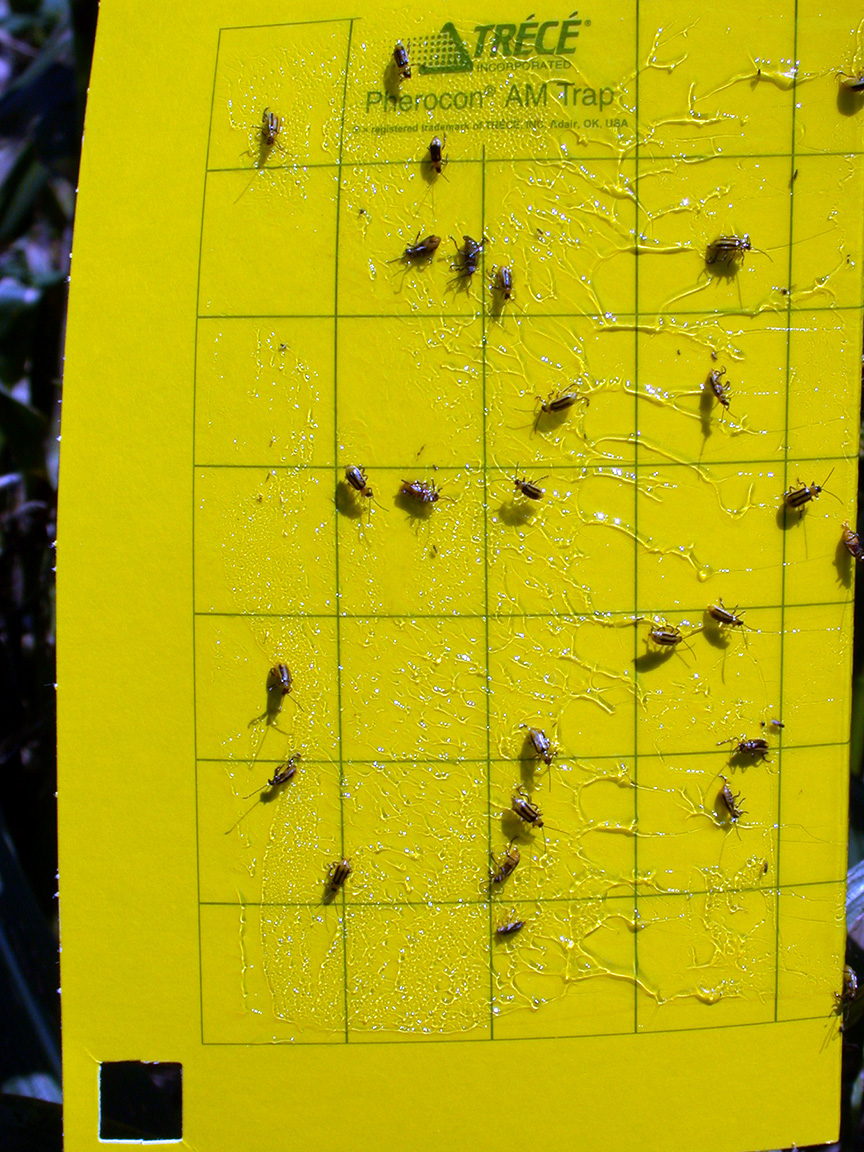Currently, rootworm larvae are hatching throughout the state. If larvae are successful in finding vulnerable corn roots, they will feed until pupation. In a matter of days, the beetles will begin emerging, then feed (e.g., mostly on corn and other pollen), and mate. Because beetles are most abundant when corn pollination or soybean’s growth makes field scouting difficult, most have no clue of numbers of beetles present and laying eggs in the field’s soil for next year. Instead, the majority of corn planted next spring will have rootworm protection (“insurance”), with no knowledge of damage risk.
Rootworm beetle numbers, and subsequent larval damage, have been low over much of Indiana for nearly ten years. We can confidently generalize for the state as a whole, but individual (field by field) risk does vary. Therefore, we cannot make a blanket recommendation that rootworm protection not be used. However, if you know the number of rootworm beetles present during their egg-laying, then we can have an informed discussion about saving input costs next year!
We are teaming up with other Midwestern States, because they too are seeing lower rootworm risk, asking “pest managers” to weekly monitor a line of four sticky-traps placed in fields of corn, soybean, or both for 4-weeks (mid-July to mid-August). Most will want to place in soybeans, assuming rotation to corn next year.
Your individual data will be pooled with others to show trends in areas/states. Cooperators have the choice of entering their data into an online database, via an app, or email trap captures directly to us. We will provide you trapping materials and instructions once we hear from you.
If you are interested, or want to learn more, please contact Christian Krupke at ckrupke@purdue.edu
Happy scouting!






